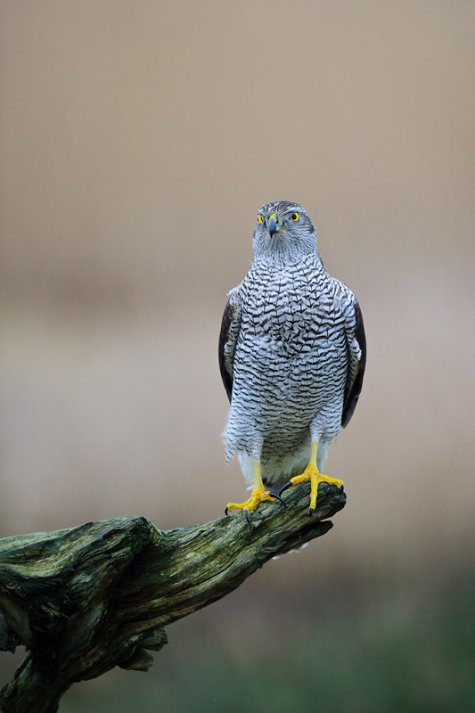More goshawks in winter
Photo: Sven Zacek, www.zacekfoto.ee
Translation: Liis
Goshawk
Goshawk; Northern goshawk Kanakull Accipiter gentilis
Goshawks breeding in Estonia mostly lead a stationary life; now migrants from the east and north have been added – so meetings in winter are more likely.
In flight we see the light or slightly cream-coloured underparts with dark cross-bars. Wings are broad and rounded. The flight image shows a couple of fast wingbeats and on sõudlennul glide flight the wings are kept narrowly together, for changing direction wings open like fans
The plumage colour does not change with the seasons. Eyes yellow, beak black, cere yellow as are the feet. Goshawks are more than half a metre long and their wingspan is over a metre. Females are bigger than males, weight around a kilo and a half, that of the ”stronger sex” a kilo or slightly less.
In open landscapes they hunt rodents: voles or water voles (Arvicola amphibius). Among birds passerines, pigeons, crow family birds. At forest verges wild hen species: capercaillies or hazel grouse, in open spaces partridges. The bigger female goshawks can manage hares. When available they also feed on carrion.
During the last decades goshawks have not thrived. At the turn of the millenium we still had more than 600 pairs of breeding birds, now nearly half less, and progeny is scarce.
Goshawks can be confused with sparrowhawks, usually then with female sparrowhawks that are bigger than the males, as is the case with goshawks.
Goshawk observations: LINK









